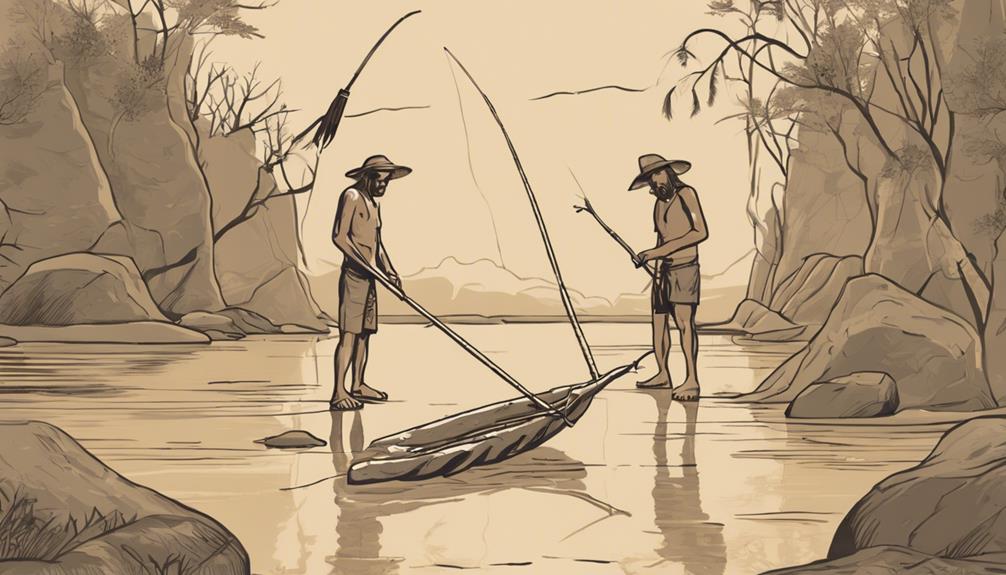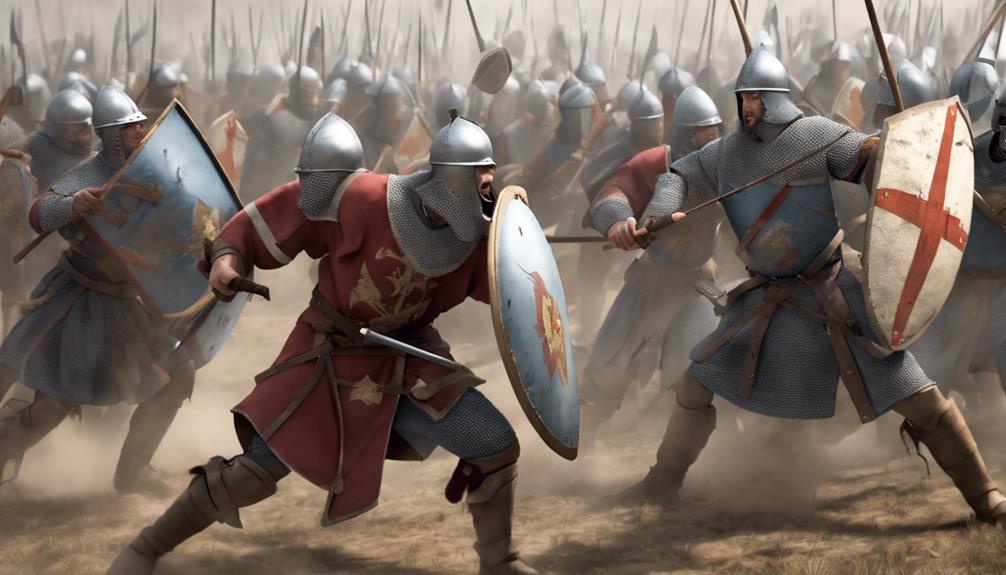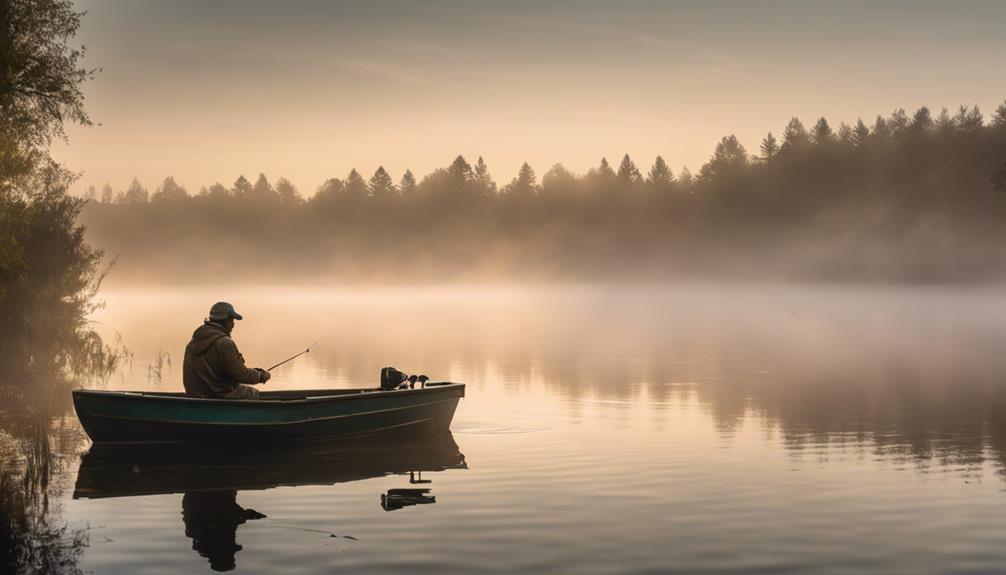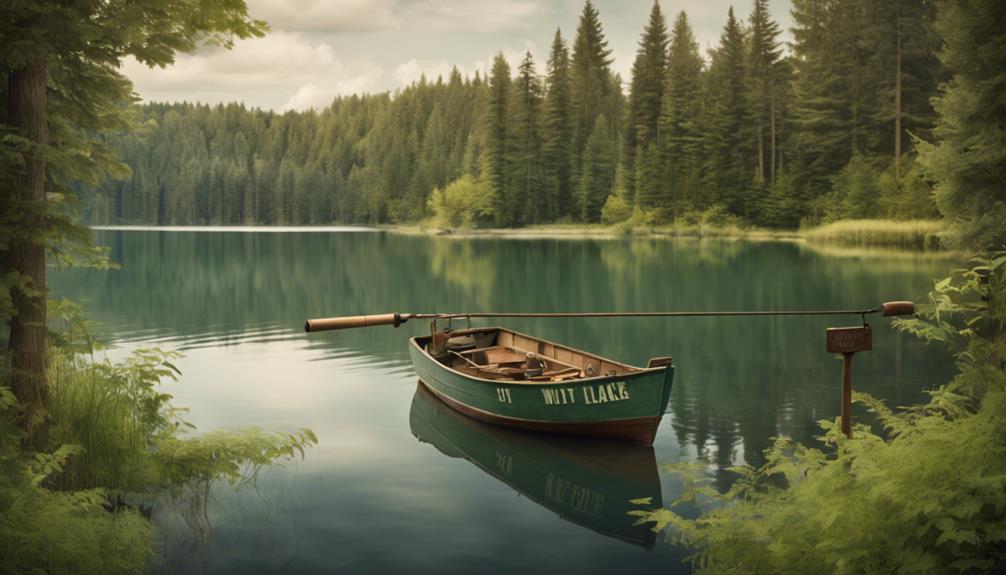As you cast your line into the vast river of history, you'll find that the evolution of angling is a tale as intricate as a spider's web.
From its humble beginnings to the sophisticated practices of today, each era has contributed its own chapter to the story of fishing.
But what secrets lie beneath the surface of angling's past? Let's explore how ancient civilizations, medieval traditions, and modern innovations have shaped this timeless pursuit.
Early Origins of Angling
Angling traces its early origins back to ancient civilizations where fishing for sustenance and sport intertwined with cultural practices. In these primitive societies, fishing wasn't just a means of acquiring food but also held ritualistic and symbolic significance. People relied on primitive methods such as using spears, harpoons, and handlines to catch fish from rivers, lakes, and oceans. The act of fishing was deeply embedded in the fabric of daily life, with techniques passing down through generations as part of cultural traditions.
As civilizations evolved, so did the art of angling. What started as a basic survival skill gradually transformed into a recreational activity enjoyed by many. Fishing became not only a way to procure food but also a form of leisure and competition. Different cultures developed their own unique angling practices, each reflecting the traditions and beliefs of the society.
Throughout history, angling has played a crucial role in shaping human interactions with the natural world. The connection between fishing and cultural practices remains strong to this day, with rituals and ceremonies often centered around the act of angling. Understanding the early origins of angling provides valuable insight into how this activity has evolved over time and continues to hold significance in various cultures around the world.
Ancient Angling Techniques
In ancient times, early fishermen relied on a variety of innovative techniques to catch fish for sustenance and cultural practices. Primitive tools such as spears, harpoons, and hand nets were commonly used for fishing. Spears were crafted from sharpened sticks or bones and were thrust into the water to impale fish swimming nearby. Harpoons, with their pointed tips and barbs, allowed fishermen to stab and secure larger fish. Hand nets, woven from natural fibers like grasses or vines, were used to scoop fish out of the water.
Fishing techniques in ancient times were diverse and regionally specific. Some cultures practiced weir fishing, where fences or traps were built in rivers to guide fish into enclosed areas for easier catching. Others employed the use of fish hooks made from shells, bones, or thorns, which were baited with natural substances like insects or smaller fish to attract prey. Additionally, line fishing was a common method, where a line made from plant fibers or animal sinew was attached to a primitive hook.
These ancient angling techniques highlight the resourcefulness and ingenuity of early fishermen in their quest to procure fish for consumption and ceremonial purposes. By utilizing primitive tools and honing their fishing skills, ancient civilizations were able to sustain themselves through the bounties of the waters.
Angling in Medieval Times
The evolution of angling techniques continued to progress in Medieval times, with fishermen adapting their methods to suit the changing dynamics of society and technology. During this period, angling became more refined, with the development of specialized gear and the use of innovative techniques. In terms of bait, anglers in Medieval times commonly used natural baits such as worms, insects, and small fish to attract their target species. These baits were often presented on hooks made from materials like bone or metal, showcasing the resourcefulness of medieval anglers.
Fishing regulations and ethics also began to take shape during this era. Local authorities started implementing rules to manage fish populations and ensure sustainable practices. Some medieval fishing regulations focused on restrictions during breeding seasons to protect fish stocks. Ethical considerations, such as catch-and-release practices to preserve fish populations, also started to emerge among anglers.
Anglers in Medieval times honed their skills through experience and shared knowledge, passing down techniques from generation to generation. The camaraderie among anglers fostered a sense of community and mutual respect for the sport. As society evolved, so did angling, laying the groundwork for further innovations in the centuries to come.
Renaissance-Era Angling Innovations
Amidst the cultural and scientific advancements of the Renaissance era, innovative techniques and gear revolutionized the art of fishing. Tackle evolution was a significant aspect of this period, with anglers exploring new ways to improve their equipment. The Renaissance techniques focused on enhancing fishing lines, hooks, and rods, making them more efficient and durable. This attention to detail in tackle design laid the foundation for modern fishing gear.
Fly fishing gained popularity during the Renaissance era, with anglers developing intricate methods to mimic insects on the water's surface. This delicate artistry required skill and precision, leading to the creation of beautifully crafted flies that enticed fish to bite. Bait development also flourished during this time, as anglers experimented with different materials and scents to attract fish. The Renaissance era marked a shift towards more strategic and sophisticated approaches to angling.
Industrial Revolution and Angling
During the Industrial Revolution, advancements in manufacturing and technology revolutionized the angling industry, shaping the way fishing gear was produced and utilized. The shift from handcrafted to mass-produced equipment made fishing more accessible to a broader population. Innovations like the mechanized production of fishing reels, rods, and lines significantly increased efficiency and lowered costs, allowing more people to enjoy the sport.
However, this period also brought about environmental challenges. The increased demand for fishing equipment led to overexploitation of natural resources like wood and metal. Pollution from factories and mines had detrimental effects on water bodies, impacting fish populations and their habitats. The Industrial Revolution's emphasis on productivity and profit often overlooked the importance of sustainable practices in angling.
Despite these environmental concerns, the Industrial Revolution laid the foundation for modern angling practices. The development of new materials, such as synthetic fibers and lightweight metals, improved the durability and performance of fishing gear. Angling became not only a recreational activity but also a competitive sport, with advancements in equipment design enhancing the overall fishing experience.
Angling in the Modern Era
With advancements in technology and sustainability practices, modern angling has transformed into a dynamic and eco-conscious activity. Anglers today are more aware of the impact their actions have on the environment and strive to fish responsibly. Social media plays a significant role in shaping modern angling practices, from promoting catch-and-release techniques to sharing knowledge about conservation efforts.
- Sustainability Practices: Modern anglers are increasingly adopting sustainable practices such as using biodegradable fishing gear, participating in clean-up efforts, and supporting fisheries management initiatives.
- Social Media Influences: Platforms like Instagram and YouTube have become hubs for anglers to share their experiences, techniques, and conservation messages, influencing a new generation of anglers to prioritize environmental stewardship.
- Community Engagement: Angling communities are actively collaborating with environmental organizations and government agencies to implement conservation projects, restore fish habitats, and advocate for sustainable fishing practices.
- Education and Awareness: Anglers are engaging in educational programs and workshops to learn about the importance of conservation, habitat protection, and the role they play in preserving aquatic ecosystems for future generations.
Technological Advancements in Angling
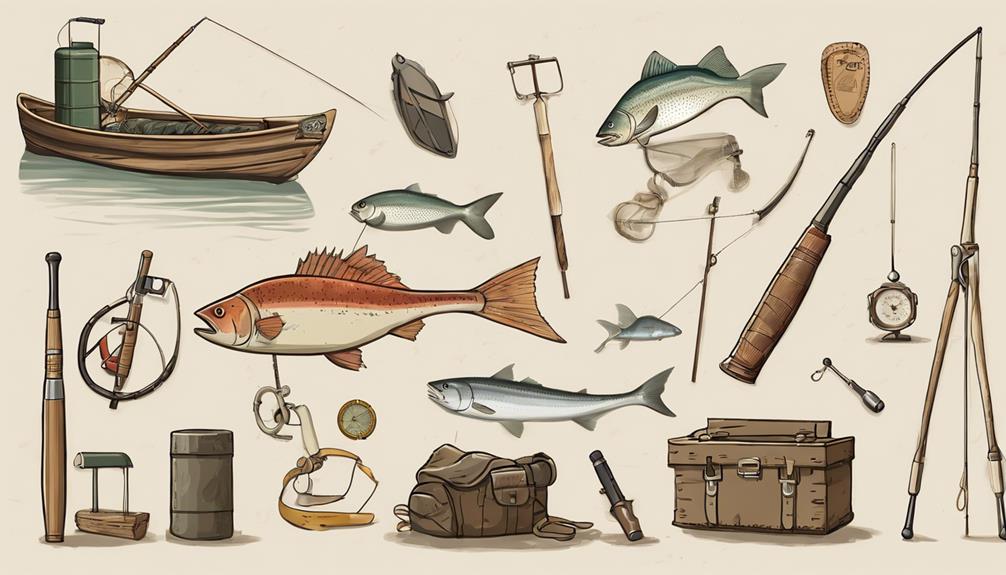
Explore the latest technological advancements revolutionizing the world of angling. When it comes to fishing gear, technology has significantly improved the equipment available to anglers. Modern fishing rods are now constructed using cutting-edge materials, making them lighter, stronger, and more sensitive. Reels have also undergone technological advancements, with features such as improved drag systems and gear ratios that enhance performance. Additionally, lures and baits are now designed using advanced materials and techniques, increasing their realism and effectiveness in attracting fish.
Digital tools have also played a crucial role in transforming the angling experience. Fishfinders have become essential devices for many anglers, using sonar technology to locate fish underwater. GPS systems integrated into these devices help anglers navigate water bodies more efficiently, ensuring they find the best fishing spots. Furthermore, smartphone apps have revolutionized the way anglers track weather conditions, water temperatures, and even log their catches.
Future Trends in Angling
Looking ahead, anglers can anticipate exciting advancements in technology and sustainable practices shaping the future of the sport. As climate change impacts become more pronounced, the angling community is adapting to ensure the longevity of their beloved pastime. Here are some key trends to watch out for:
- Integration of Sustainable Practices: Anglers are increasingly focusing on sustainability by practicing catch and release, supporting habitat restoration projects, and using eco-friendly gear to minimize their environmental footprint.
- Technological Innovations: From advanced fish finders to smart tackle boxes, technology is revolutionizing the angling experience, making it more efficient and enjoyable for anglers of all levels.
- Climate Change Adaptation: Anglers are learning to adapt to changing water temperatures, altered fish migration patterns, and shifting habitats caused by climate change, requiring a more dynamic approach to their fishing strategies.
- Community Involvement: Collaborative efforts within the angling community to address environmental challenges, promote conservation, and advocate for sustainable fishing practices are on the rise, fostering a sense of stewardship among anglers.
Frequently Asked Questions
What Impact Did Angling Have on the Social Structure of Ancient Civilizations?
Angling in ancient civilizations had a significant impact on the social structure. It influenced the social hierarchy by providing opportunities for individuals to showcase their skills and knowledge, potentially earning them respect and higher status within the community.
Additionally, angling might've influenced cultural norms surrounding leisure activities and outdoor pursuits, shaping the way people interacted with nature and each other.
How Did Religion Influence Angling Practices in Medieval Times?
In medieval times, religion played a significant role in shaping angling practices. Religious influences guided fishing rituals and customs, with many anglers adhering to specific rules and beliefs while engaging in this activity.
The connection between spirituality and angling was deeply intertwined, influencing not only how people fished but also the significance they attributed to their catches. These medieval practices showcased the fusion of faith and fishing in the historical context of angling.
Were There Any Famous Historical Figures Known for Their Contributions to Angling During the Renaissance Era?
During the Renaissance era, there were several famous historical figures known as Renaissance innovators who made significant contributions to angling techniques. These individuals revolutionized fishing methods and equipment, shaping the way we fish today.
Their innovative approaches and creative ideas have influenced angling practices for centuries, leaving a lasting impact on the sport and its evolution.
How Did the Industrial Revolution Affect the Popularity of Angling as a Recreational Activity?
During the Industrial Revolution, advancements in technology made angling more accessible and popular as a leisure activity. Economic changes allowed more people to participate, leading to increased interest in environmental conservation.
The development of new fishing gear and equipment improved the overall angling experience. As a result, angling became not just a pastime but also a way to appreciate nature and support efforts for sustainability.
What Role Did Women Play in the History of Angling and How Has Their Involvement Evolved Over Time?
Women's participation in angling has evolved significantly over time. Initially limited by societal norms, women now play a crucial role in the sport.
Gender dynamics have shifted, leading to more inclusivity and recognition of women anglers. Cultural shifts have gradually removed barriers, allowing women to fully engage in angling.
Their involvement continues to grow, shaping the sport's future and challenging traditional perspectives within the angling community.
Conclusion
As you reflect on the historical evolution of angling, you can see how this timeless practice has continuously adapted and evolved over the centuries. From ancient techniques to modern technological advancements, angling has remained a beloved pastime for many.
Looking towards the future, it's exciting to consider the potential trends and innovations that will further enhance the angling experience for generations to come. Keep casting those lines and exploring the world of angling!
